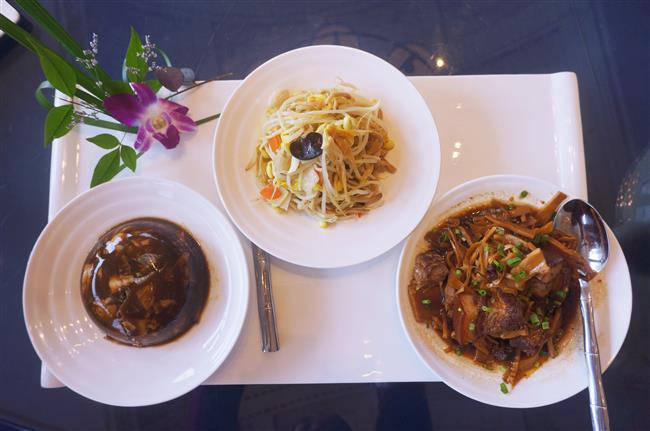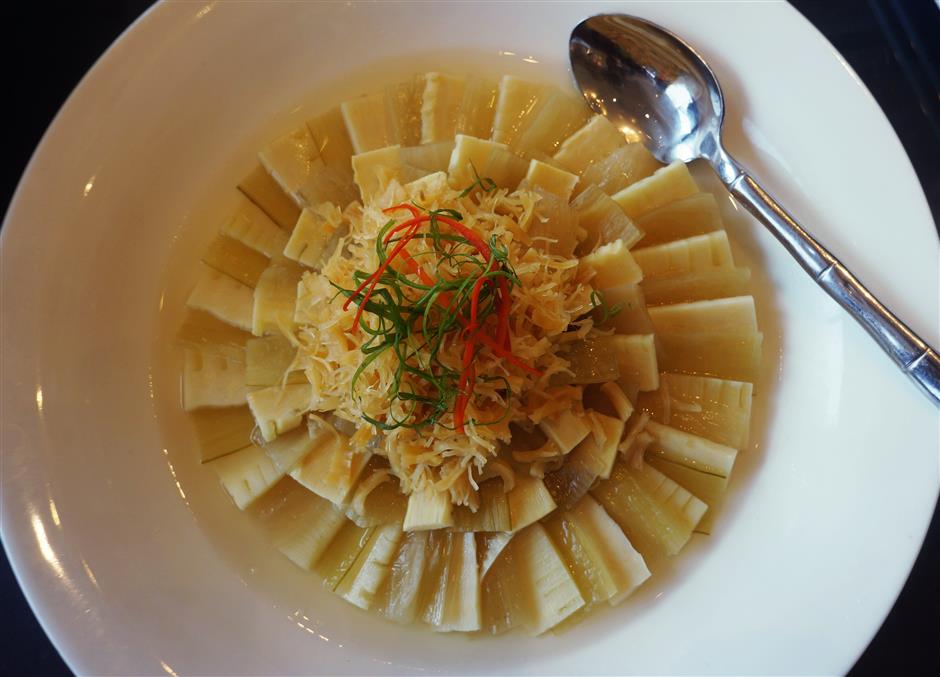The New Hotel offers historic taste of Hangzhou
If there were one hotel that embodies the spirit, comfort and culture of Hangzhou over the last century, it would have to be The New Hotel (Xinxin Hotel).
Established in 1913, the present New Hotel, opposite the West Lake, and not far from the Bai Causeway, is a complex consisting of several buildings along Beishan Road. There is the former He’s Villa on the east side, the original five-story New Hotel building in the middle, the former Liu’s Villa “Guyun Thatched Hut” on the west side, and the Qiushui Villa, built by Shi Liangcai, owner of the Shun Pao, which was once a widely circulated newspaper.

The New Hotel complex on Beishan Road right beside the West Lake
The name of the hotel comes from a line in the Chinese Confucian classics “The Great Learning,” which encourages people to bring forth renewal and progress every day.
“It was also a request from the Chinese elites at that time to reform every aspect of society, as major events, like the New Culture Movement, popped up in 1920s,” said Ye Huaming, chairman and general manager of The New Hotel.
The New Hotel was the earliest residence by the West Lake to be equipped with modern facilities. It was a first choice for prominent people, including the leading figure in the New Culture Movement, Hu Shi, an influential writer, critic Lu Xun, and also high-level officials in the then Kuomintang government.
The history of the hotel is, therefore, intertwined with Hangzhou history during the first half of the 20th century.
In 2015 the hotel was renovated and some of its features from the Republic of China period (1912-49) were recovered. You don’t have to be a resident to book a history tour at the hotel. Anyone can come and book and listen to the love affairs and anecdotes from over a century ago.
Its lakeside restaurant has also developed a set menu, integrating each main course with an old story and named after a certain celebrity who once resided at the hotel.
Last weekend, the restaurant launched an “Old Time Food Festival” that paid tribute to the authentic home tastes of Hangzhou. These are the dishes that once featured in a local family reunion meal on festive occasions.
Shanghai Daily lists three dishes below for foodies to try out. The festival will last until January 1, 2018.

Three must-haves of Hangzhou
Three must-haves of Hangzhou
For natives born in 1970s Hangzhou, there are several dishes that will stick in their childhood memories. They may be ordinary or even peculiar for today’s younger generation, but they are the ultimate dishes in a time of frugalness.
The three must-haves are fish soup jelly, eight vegetable treasures and braised pork with preserved bamboo shoots.
To make a Hangzhou-style fish soup jelly, you need to put the fish soup in a fridge overnight and place the bowl-shaped jelly upside down on a plate to serve. The eight treasures refer to eight types of sliced vegetables, including water chestnut, carrots, bean sprouts, black fungus and shiitake.
All of these dishes can be served cold. If there are leftovers for the following day, a spoonful on some hot congee makes a delicious meal for breakfast.

Preserved Chinese cabbage steamed with winter bamboo shoots
Preserved Chinese cabbage steamed with winter bamboo shoots
This is a typical dish offered in winter that Hangzhou natives should be familiar with.
After the Chinese solar term of Xiaoxue, which means the official arrival of winter, almost every family will start preserving their own Chinese cabbage in a huge pottery vat. And one important step would be to see someone stand inside the vat and stomp on the cabbage to make each layer firm, before preserving it with salt. This was a classic local family scene in winter, which is rarely seen nowadays.
“We spent two afternoons on the stomping process,” said Chen Jianjun, executive chef at The New Hotel, who revealed that all the preserved cabbage offered on their menu was made by hotel staffers. “For me the taste of the good old days is found in the simplest way of cooking, by maintaining the original taste of the food with less artificial seasonings.”
Since the preserved cabbage is already salty, the chef at the hotel used shredded scallops to enhance the flavor instead of adding more salt to the dish.

Preserved meat in soy sauce steamed with glutinous rice
Preserved meat in soy sauce steamed with glutinous rice
Preserved meat in soy sauce is another delicacy that may be specific to Hangzhou.
Every winter you can see people hanging dried ducks or pork belly slices outdoors. They are part of the winter memories for the natives. The duck or pork is marinated for days in a mixture of soy sauce, sugar, cooking wine and other spices before they are dried.
When the dried food is being prepared you can tell that the Spring Festival is not far away.
The meat is then sliced after drying, and dropped into a steamer every time you want some. This dish can also show up on a table long after the Chinese New Year’s Eve.
In this dish the chef, at the hotel, steams preserved duck with preserved pork and also Chinese sausage on top of glutinous rice, which is marinated in soy sauce.
The corn, beans and shiitake added in the rice reduces the greasiness of the meat while the meaty flavor makes the rice even more appetizing.
Address: 56-60 Beishan Rd
















